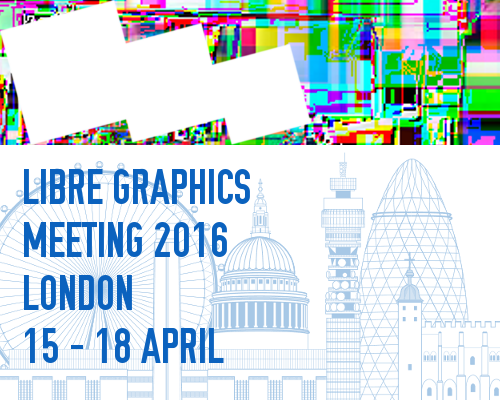We always dedicate a few pages to document useful and free-culture oriented resources in every issue of the Libre Graphics magazine.
 Today, we join the Day Against DRM initiative by making a short selection of some DRM-free resources we use in our everyday work. They were picked not only because they provide incredibly useful assets under permissive licenses, but also because all of them do without DRM or other restrictive measures to limit our freedoms.
Today, we join the Day Against DRM initiative by making a short selection of some DRM-free resources we use in our everyday work. They were picked not only because they provide incredibly useful assets under permissive licenses, but also because all of them do without DRM or other restrictive measures to limit our freedoms.
Open Font Library
The Open Font Library is an archive for libre fonts, launched in 2006. It provides a home to a large collection of fonts published under libre licenses like the OFL. Unlike other font providers and frameworks that force you into their own DRM-laden backends, the Open Font Library respects your freedom. The catalogue page lets you browse the full collection and filter it with several parameters, making it a great interface to look for fonts for your projects. Everything can be downloaded: there are no restrictions, no fees, no obligations other than respecting the license of whatever you download. That’s the kind of service we love and are thankful for: one that respects you as a user and gives you freedom of action to use and repurpose tools and assets.
Public Domain Review
There is a huge collection of work in the Public Domain. The Internet Archive, an ever growing archive of these valuable pieces, hosts a portion of it. Yet, it is so big that it’s hard to grasp without a little help to get started. And that is the Public Domain Review, a project powered by Open Knowledge, that takes you through some of the hidden gems.
It presents a curated walkthrough to the vast commons that are out there. Fortnight essays, collections and curated picks are geared, in their words, to ” the surprising, the strange, and the beautiful”. Get inspiration and stand in the shoulder of giants, that what the Commons free you to do.
Project Gutenberg
While not featuring recent releases, the collection of books available at Project Gutenberg is a true gem, making literature available in several open formats, as well as no DRM whatsoever. While our personal preference leans toward printed matter, there are times when digital books might be handy. And we can really do without DRM through Kindle and other publishing platforms, since we like to know that our books won’t suddenly disappear. So we keep reading through Project Gutenberg.
F-Droid
While not directly related to the work involved in making a magazine, the smartphone is an inevitable tool for all purposes of life and work. It is therefore important to consider the freedoms that you’re granted when used your phone, and the ones that are taken away from you. One of the places where this issue is paramount is the “app ecosystem”. The software “stores” restrict user choice by forcing the existence of a centralized, “curated” and controlled hub, the rules of which you must follow to see your software available to other users. Furthermore, there’s tight control over your own access to the tools and their source code, mostly using DRM and DRM-like mechanisms.
We miss the days when you were able to install any kind of software in your computer, and wonder why we’re not demanding the same for our phones. That’s why we’re thankful for F-Droid, a hub that provides free software tools for Android phones. While F-Droid doesn’t boast the needlessly huge catalogue of its proprietary counterparts, it has all bits and pieces we need for turning our phones into useful, non-surveilled (or less so) and trustworthy tools that don’t restrict our actions.
A world without DRM is an excellent thing. And there many iniatives that make that point clear:
No DRM is all we need.

F-Droid has become my default app store – because I know that if I find something there, it will be one, two or maybe three apps that actually do what I’m looking for, not a billion of clones that try to show me adds and snoop my data.